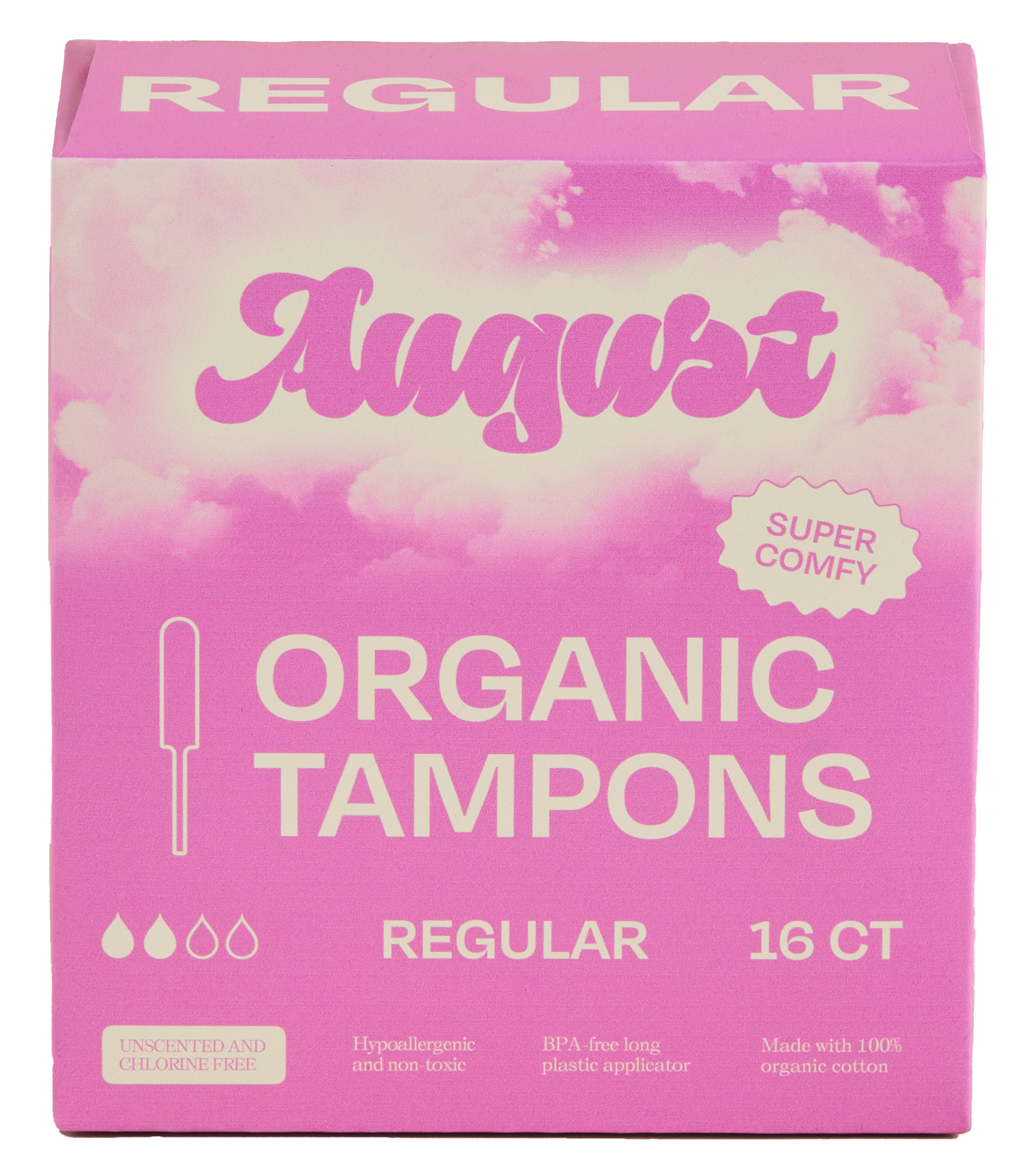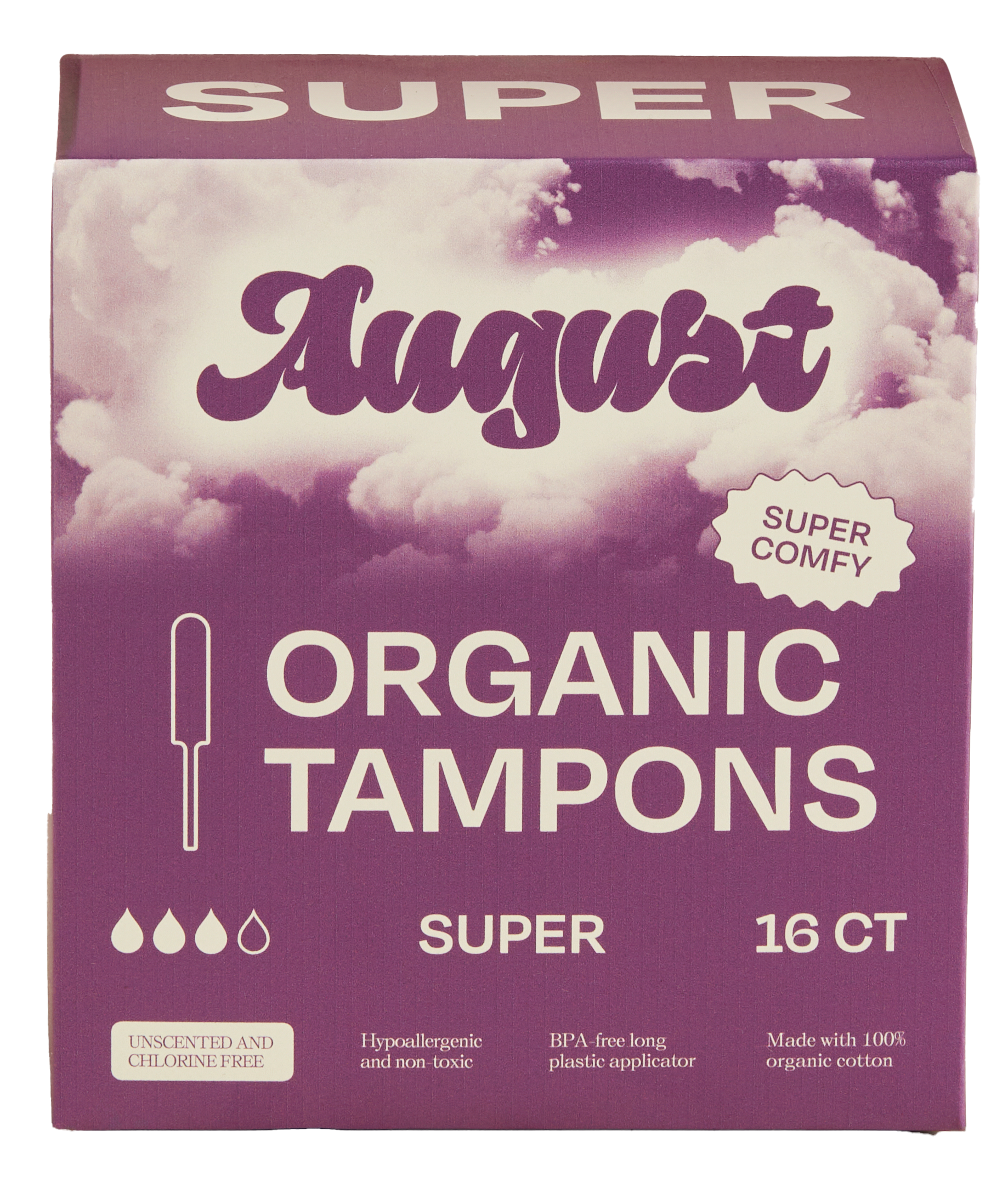
March is Endometriosis Month. Although Endo Warriors are common among menstruators around the world (around 10% of those of reproductive age), diagnosis of endometriosis is often delayed and misinformation is everywhere.
Delays and misinformation aren’t necessarily done with bad intent, but the outdated descriptions of the disease cause a lot of people to endure severe period pain and day-to-day interruptions.
All medical information is verified by experts from the August Medical Board.
Since endometriosis has many contesting definitions, we had two members of the August Medical Board review the information.
Dr. Saru Bala (she/her), ND is a longtime member of the August Medical Board who offers integrative solutions for any hormonal health issues – like endometriosis, among others.
Dr. Shawn Tassone (he/him), MD, PhD, FACOG has 20+ years of experience as a double board-certified in Obstetrics and Gynecology, and by the American Board of Integrative Medicine.
Check out this 30 minute IG Live with Dr. Bala where we talked all about endometriosis.
What is endometriosis?
Endometriosis is a disease that affects 1 in 10 menstruators between ages 15 and 49.
At its most basic description, it's a chronic, systemic disease where the growth of endometrial-like tissue is outside of the uterus. This tissue can grow in various places beyond the pelvis. For example, in other organs such as: your bowels, kidneys, liver, and in severe cases, even in your lungs, brain and sinuses.
Throughout the stages of the menstrual cycle, the endometrial-like tissue potentially acts as endometrial tissue would — it thickens, breaks down and bleeds with each menstrual cycle. But because this tissue has no way to exit your body, it becomes trapped.
It can cause issues ranging from ovarian cysts (endometriomas) to implants throughout the pelvis and body and contributes to infertility.
What are the symptoms of endometriosis?

Common symptoms include:
- abnormal or irregular periods
- painful periods but also lower back & tummy pain in general
- painful bowel movements and urination
- painful sex
- fatigue
- bowel habit changes
- nausea and vomiting with your period
- or symptoms related to the implants.
Remember that period pain is NOT normal so if you are experiencing any of these symptoms, check in with your doctor!
What does endometriosis feel like?

This is hard to say because it feels different for everyone!
The pain is often described as sharp, stabbing, achey, twisting, or burning.
Generally, Endo Warriors experience pain ranging from mild to severe with timing from a few days before the cycle to well into the cycle.
What causes endometriosis and is it preventable?
There is no certain explanation about the cause, only theories and unfortunately, it is not preventable.
What we do know, however, is that it’s an inflammatory condition meaning: the immune system is involved, and it responds to hormonal fluctuations.
Adhesions, which are a common result of endometriosis, are the result of inflammatory reactions forming a band between the organs and are more like scar tissue. "Lesions" are the patches of endometriosis tissue itself.
Can endometriosis be treated?

Cure rates have been posted around 50% with combination surgery and endocrine medications but were also tied to a second surgery.
As explained above, due to the inflammatory character of endometriosis, addressing inflammation is a significant factor for ongoing treatment. Especially in mild-moderate cases.
Other potential treatments or strategies of mitigation that can be useful (in combination) to manage the pain are:
- Surgery
- Hormone therapy
- Heating pads
- Pain killers
- TENS Unit
- A change in diet
In Dr. Bala’s practice, she treats her patients with period pain and endometriosis pain similarly, addressing the inflammation and hormones first. In particular, elevated estrogen levels (which can potentially worsen period pain) and high levels of prostaglandins (which are main factors of primary dysmenorrhea, aka period pain).
Dr. Tassone is one of the few endometriosis experts in the country that employs excisional surgery, hormonal balance, and anti-inflammation with diet, exercise, and supplements.
How common is endometriosis?

The World Health Organization reports that about 10% of menstruators of reproductive age have endometriosis.
However, it’s likely more prevalent than we as doctors are even aware of. This is because it can take approximately 4-11 years for a doctor to diagnose endometriosis.
This is, in part, due to misdiagnosis, but also due to the fact that confirmation is done through surgical excision or an invasive inspection called a laparoscopy. So many people may be negated from proper diagnosis and treatment.
Many people with mild endometriosis may go their whole lives without even knowing they had it.
What are the 4 stages of endometriosis?
There are 4 stages: minimal, mild, moderate, severe and are diagnosed surgically.
The stage of endometriosis is based on:
- the location, amount, depth, and size of the endometrial tissue.
- the extent of the spread of the tissue
- how much of the pelvic organs are involved
- how much pelvic adhesions there are
- how much blockage of the fallopian tubes there are
The stages of endometriosis don’t necessarily reflect how much pain the person may experience. On one hand, stage 1 can be very painful for some people and on the other hand, some people with Stage 4 may have no idea.
Is endometriosis genetic?
There is a genetic predisposition for endometriosis. There are also environmental and epigenetic factors; a small percentage of endometriosis is hereditary.
How does an OBGYN test for endometriosis?
Your OB/GYN may do a pelvic exam, ultrasound, MRI, and/or laparoscopy (aka surgery). Though, as stated, if you haven't had surgery, endometriosis is only suspected.
Can you see endometriosis on an ultrasound?
If it’s a deep implant or is causing an ovarian cyst you may be able to, although it depends on sizes and depths of invasion. But in milder cases, diagnosis with ultrasound may prove difficult.
What are the risk factors of endometriosis?
- Giving birth for the first time after 30
- Never being pregnant (infertility)
- Family history
- Immune disorders
- Structural abnormalities of uterus/tubes
- Heavy bleeding
- Short cycles (less than 27 days)
- Bleeding for more than 7 days at a time
However, these are different depending on where you look and the body of the patient.
How does endometriosis affect fertility and my ability to get pregnant?
According to Dr. Bala, about 75% of people with endometriosis can achieve pregnancy.
Severe endometriosis can have adhesions and may cause issues with the fallopian tubes. Removing the endometrial lesions is possible and should be done by an experienced surgeon, but new implants could grow back.
Another piece is estrogen – if estrogen metabolism is a bit skewed, that can also affect reproductive abilities. Dr. Bala explained that it’s not as clear cut as: “you have endo, which automatically means you’ll have trouble getting pregnant”. There are several factors.
Does endometriosis cause weight gain?
Not directly. But excess inflammation and excess hormones (like estrogen) may cause weight gain.
Is it possible to have PCOS in addition to endometriosis?
Unfortunately yes, they’re not mutually exclusive (aka they can be experienced at the same time).
Can an IUD cause endometriosis?

According to Dr. Bala, no it cannot.
Does sex hurt when you have endometriosis?
It may be painful, depending on where the lesions are.
But sex shouldn't hurt. If it's painful, check in with your doctor and maybe even a pelvic floor PT.
What causes postmenopausal endometriosis?
Postmenopausal endometriosis is a bit more complex than premenopausal endometriosis since it’s still unclear as to whether or not it’s due to recurrence, due to a continuation of a previous disease, or due to a de novo condition.
Excess estrogen, in general, is associated with endometriosis. As menopause occurs, estrogen production levels change in the ovaries which should also be considered.
You made it to the end! We hope you feel more educated about endometriosis.
Consider this our commitment to spread reliable information about endo all year around.
And here's a call-in for more research that aims to fully understand the complexity, and full-body effects that this systemic disease has on people.
If you are struggling with severe menstrual period pain yourself, or any of the listed symptoms, we definitely recommend checking in with your doctor!
Sources
Verified by the following August Medical Board members:
Abd El-Kader, A. I., Gonied, A. S., Lotfy Mohamed, M., & Lotfy Mohamed, S. (2019). Impact of Endometriosis-Related Adhesions on Quality of Life among Infertile Women. International journal of fertility & sterility, 13(1), pp. 72–76. https://doi.org/10.22074/ijfs.2019.5572
Endometriosis Foundation of America. (2022). Retrieved from https://www.endofound.org/endometriosis-a-to-z
Mettler, L., Ruprai, R., & Alkatout, I. (2014). Impact of medical and surgical treatment of endometriosis on the cure of endometriosis and pain. BioMed research international, 264653. DOI: 10.1155/2014/264653
Secosan, C., et al. (2020). Endometriosis in Menopause-Renewed Attention on a Controversial Disease. Diagnostics (Basel, Switzerland), 10(3), p. 134. DOI: 10.3390/diagnostics10030134
Taylor, H.S., Kotlyar, A.M., Flores, V.A. (2021). Endometriosis is a chronic systemic disease: clinical challenges and novel innovations. Lancet, 397, pp. 839-52. https://pubmed.ncbi.nlm.nih.gov/33640070/































